
Arisaema is a large and diverse genus of the flowering plant family Araceae. The largest concentration of species is in China and Japan, with other species native to other parts of southern Asia as well as eastern and central Africa, Mexico and eastern North America. Asiatic species are often called cobra lilies, while western species are often called jack-in-the-pulpit; both names refer to the distinctive appearance of the flower, which consists of an erect central spadix rising from a spathe.

Arisaema triphyllum, the jack-in-the-pulpit, bog onion, brown dragon or Indian turnip, is a herbaceous perennial plant growing from a corm. It is a highly variable species typically growing 30–65 centimetres (12–26 in) in height with three-part leaves and flowers contained in a spadix that is covered by a hood. It is native to eastern North America, occurring in moist woodlands and thickets from Nova Scotia west to Minnesota, and south to southern Florida and Texas.
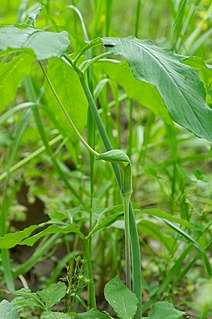
Arisaema dracontium, the dragon-root or green dragon, is a herbaceous perennial plant in the genus Arisaema and the family Araceae. It is native to North America from Quebec through Minnesota south through Florida and Texas, where it is found growing in damp woods. It has also been reported from northeastern Mexico Plants grow 20–50 centimetres (7.9–19.7 in) tall when in bloom and after flowering reach 100 centimetres (39 in), and each grows from a corm. Normally, a plant produces one leaf with a long petiole, its leaf is composed of 7 to 13 leaflets, with its central leaflet being the largest one and with leaflets becoming smaller as they are produced distally, the leaflets are held out horizontally over the plant. During flowering in spring, a single slender, green spathe 3–6 centimetres (1.2–2.4 in) long is produced; it covers a tapering, long thin spadix. The tail-like spadix grows out around the top of its spathe. After flowering, up to 150 berries are produced in a club-shaped column. In late summer, the green berries turn orange-red, each berry produces 1 to 3 seeds. It is listed as a vulnerable species in Canada.
Hiroyoshi Ohashi is a botanist formerly at the University of Tokyo and Tohoku University. He began publishing on Japanese Arisaema in the early 1960s. He published a couple of miscellaneous notes on Arisaema in 1963 and 1964 and these were followed by a revision of the genus for Japan jointly published in 1980 with J. Murata, and by the Araceae treatment for the Wildflowers of Japan.

Nechamandra is a monotypic genus of an aquatic plant family Hydrocharitaceae. The sole species is Nechamandra alternifolia. It is found in slow moving fresh water.

Arisaema thunbergii, commonly known as Asian jack-in-the-pulpit, is a plant species in the family Araceae. It is found in Japan at elevations of 20–100 meters. The plant is poisonous as all parts contain calcium oxalate.

Arisaema serratum is a species of flowering plant in the arum family (Araceae). It is native Japan, where it is found from the Kansai region north to the island of Hokkaido. Its natural habitat is damp forests.
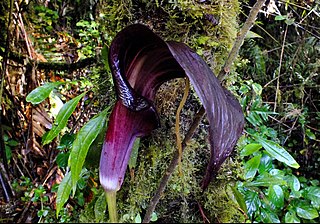
Arisaema section Anomala is a section of the genus Arisaema.
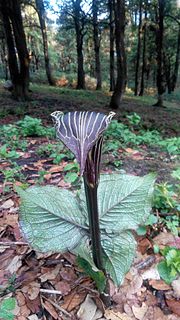
Arisaema section Arisaema is a section of the genus Arisaema.
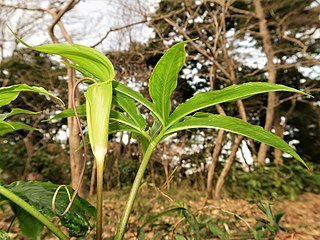
Arisaema section Clavata is a section of the genus Arisaema.

Arisaema section Flagellarisaema is a section of the genus Arisaema.
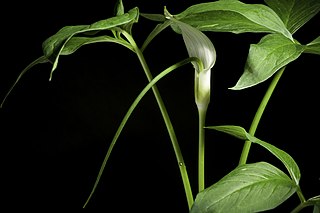
Arisaema section Odorata is a section of the genus Arisaema. This section was described in 2013 in "A nomenclatural review on the infrageneric classification of Arisaema (Araceae)" in the Journal of Japanese Botany.
Arisaema decipiens is a species of Arisaema found in Guangxi, Guizhou, Hunan, Sichuan, Xizang, Yunnan provinces of China, India, Myanmar, and Vietnam growing in evergreen forest at elevations of 600–1600 meters.
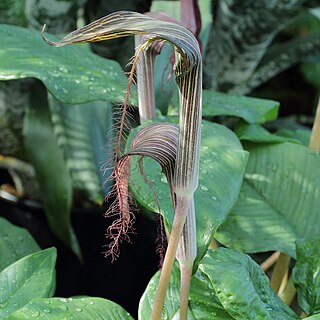
Arisaema fimbriatum is a species of Arisaema found in Thailand, Peninsular Malaysia, and Pulau Lankawi
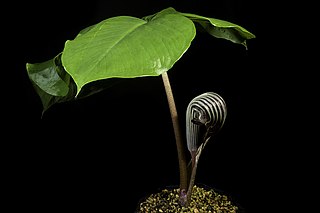
Arisaema section Franchetiana is a section of the genus Arisaema.
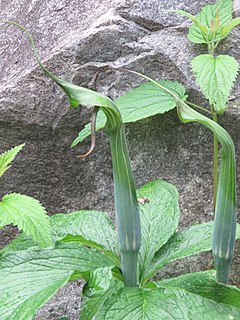
Arisaema section Tenuipistillata is a section of the genus Arisaema.
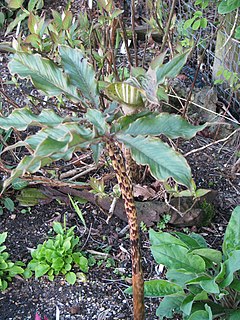
Arisaema section Nepenthoidea is a section of the genus Arisaema.
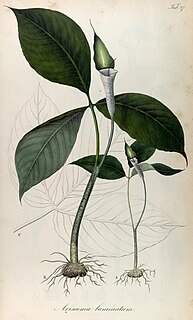
Arisaema section Attenuata is a section of the genus Arisaema found in tropical and subtropical habitats.
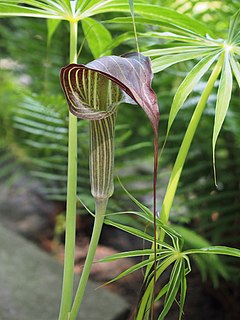
Arisaema section Sinarisaema is a section of the genus Arisaema.

Arisaema section Pistillata is a section of the genus Arisaema.




















